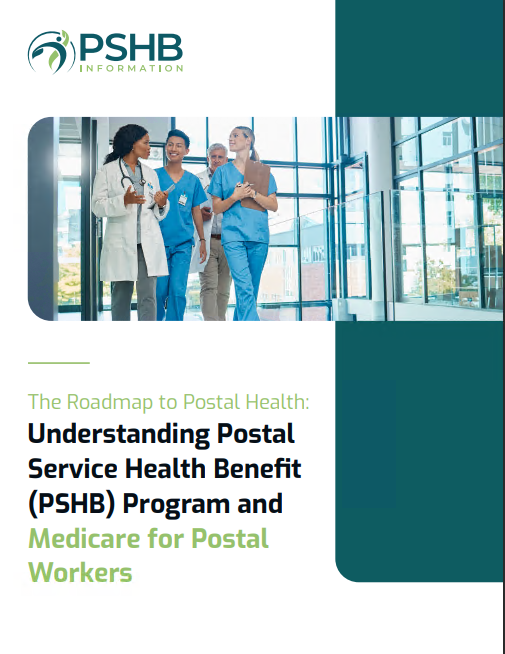Key Takeaways
-
Understanding copayments in the Postal Service Health Benefits (PSHB) program helps you plan for healthcare costs effectively.
-
Learn how different services like preventive care, routine checkups, and specialty treatments impact your out-of-pocket expenses.
Breaking Down PSHB Copayment Structures
If you’re enrolled in the Postal Service Health Benefits (PSHB) program, understanding how copayments work is essential. These payments directly influence how much you’ll spend out-of-pocket for your healthcare needs, whether you’re scheduling a routine physical or consulting a specialist. This knowledge gives you the tools to prepare for potential costs and make smart decisions about your healthcare. Let’s unpack the details so you can navigate these costs with confidence and clarity.
Preventive Care: Your Cost-Free Zone
Under the PSHB program, preventive care is designed to keep you healthy without straining your budget. The good news? Most preventive services come with no additional cost to you. This means no copayments for:
-
Annual physical exams
-
Vaccinations
-
Routine screenings like mammograms and colonoscopies
-
Pediatric care, including immunizations
By prioritizing preventive care, you’re not only staying ahead of potential health issues but also reducing the need for more costly treatments down the road. These no-cost services provide an excellent opportunity to stay proactive about your health. Just remember to schedule these services through in-network providers to ensure you avoid unexpected expenses. Out-of-network visits for preventive care might not be covered or could come with higher costs, so always verify before your appointment.
Preventive care also supports early detection of conditions that may otherwise escalate. For example, routine screenings can catch issues early, allowing you and your healthcare provider to address them promptly and effectively.
Routine Care: The Everyday Health Needs
Routine care refers to the regular healthcare services you’ll likely need throughout the year. Unlike preventive care, these visits typically require a modest copayment. Here’s what to expect:
-
Primary Care Visits: Seeing your family doctor for checkups, minor illnesses, or ongoing conditions usually involves a set copayment, often ranging between $20 and $40. These visits are essential for managing overall health and addressing any immediate concerns.
-
Specialist Consultations: For conditions that require more focused care, such as dermatology or cardiology, expect slightly higher copayments, typically $30 to $60 per visit. Specialists play a crucial role in diagnosing and treating more complex health concerns, and the slightly higher cost reflects their expertise.
Routine care copayments are manageable, but keeping track of multiple visits can help you budget more effectively. Consider maintaining a simple log of your appointments and related expenses to stay organized and better anticipate future costs.
Specialty Care: Managing Complex Needs
When it comes to specialty care, copayments can vary significantly depending on the type of service and provider. Specialty care includes:
-
Chronic Condition Management: For illnesses like diabetes or arthritis, you may need regular visits to specialists or receive advanced treatments. These ongoing needs often require coordination among various providers, making it even more important to understand your copayment responsibilities.
-
Advanced Diagnostic Services: Tests like MRIs, CT scans, or biopsies often come with higher copayments compared to standard diagnostic services. These advanced tests are critical for accurate diagnosis and treatment planning.
-
Therapies and Rehabilitation: Physical therapy, occupational therapy, and speech therapy sessions are common for recovery after injury or surgery. Each session typically requires a set copayment. Multiple sessions might be necessary over weeks or months, so plan for these recurring costs.
Since specialty care costs can add up quickly, you’ll want to verify your coverage details and confirm whether your providers are in-network. Staying within the network significantly reduces out-of-pocket expenses, as out-of-network services can lead to much higher copayments or coinsurance charges.
Emergency Care: What Happens When It Can’t Wait
Emergencies don’t come with a warning, but knowing your costs in advance can ease some stress. For emergency room visits, PSHB plans generally apply a higher copayment, ranging from $100 to $150. Urgent care centers, which are often more affordable, may charge between $50 and $75 per visit.
For true emergencies, always prioritize getting the care you need. The higher copayment for ER visits reflects the immediate, intensive care provided, so consider urgent care for less severe issues whenever appropriate. Familiarize yourself with nearby urgent care centers as an alternative for non-life-threatening conditions, especially since their lower costs can add up to significant savings over time.
Prescription Medications: Filling Your Prescriptions Without Emptying Your Wallet
The PSHB program categorizes prescription drugs into tiers, influencing your copayment:
-
Generic Medications: The most affordable option, often with the lowest copayments.
-
Preferred Brand-Name Drugs: These have moderate copayments and are listed on the plan’s formulary.
-
Non-Preferred Brand-Name Drugs: Higher copayments apply to these medications.
-
Specialty Medications: These are the most expensive, used for complex or rare conditions.
Your copayment amount depends on the tier and whether you use in-network pharmacies. Consider using mail-order services for ongoing prescriptions to potentially save on costs. Some plans offer discounts for extended supplies of medications via mail-order services, which can be especially beneficial for managing chronic conditions.
To avoid surprises, review your plan’s formulary regularly. This document outlines the medications covered and their respective tiers, helping you plan for any adjustments in cost.
Mental Health Services: Prioritizing Your Emotional Well-Being
Access to mental health care is an essential part of your overall wellness. PSHB plans typically require copayments for mental health services, which might include:
-
Therapy Sessions: Individual or group therapy visits usually involve a copayment similar to specialist consultations. Therapy sessions provide a space to address challenges and improve emotional health.
-
Psychiatric Care: Appointments for medication management or other specialized treatments may come with slightly higher costs. These services are often vital for managing conditions that require both therapy and medication.
Check your plan details to understand coverage for telehealth services, which are becoming a popular and convenient option for mental health care. Telehealth often offers lower copayments, making it an attractive alternative for regular therapy or consultation sessions.
Vision and Dental Care: Seeing and Smiling Bright
While the PSHB program focuses primarily on medical care, many plans offer supplemental benefits for vision and dental services. Here’s how copayments typically break down:
-
Vision: Routine eye exams often have a low copayment. However, frames, lenses, and contacts may require additional out-of-pocket costs. If you rely on corrective lenses, check whether your plan offers discounts or allowances for eyewear.
-
Dental: Preventive dental care like cleanings and exams might come with minimal or no copayments, while restorative treatments such as fillings or crowns may involve higher costs. Dental coverage can vary widely, so it’s worth reviewing your specific plan for details on copayments and coverage limits.
These services vary by plan, so reviewing your specific coverage is crucial. For significant procedures, ask for a pre-treatment estimate to understand the potential costs upfront.
Staying In-Network: A Key to Lower Costs
One of the simplest ways to manage your copayment expenses is by using in-network providers. Out-of-network services often come with higher copayments or coinsurance rates, significantly increasing your out-of-pocket costs. Use your plan’s directory or online tools to confirm a provider’s network status before scheduling appointments. Establishing relationships with in-network providers ensures consistent care while keeping your costs under control.
Budgeting for Healthcare Costs
To effectively plan for your healthcare expenses, consider:
-
Tracking Your Visits: Keep a record of your routine, specialty, and emergency care visits to understand your annual spending patterns.
-
Using Preventive Services: Take advantage of no-cost preventive care to avoid more expensive treatments later.
-
Flexible Spending Accounts (FSAs): If your plan offers an FSA, use it to set aside pre-tax dollars for eligible healthcare expenses, including copayments.
By being proactive, you can make your healthcare spending more predictable and manageable. Remember to review your plan’s annual cost-sharing limits to gauge the maximum out-of-pocket expenses you might face.
Addressing Unexpected Costs
Despite your best efforts to plan, unexpected costs can arise. Here’s how to handle them:
-
Review Your Explanation of Benefits (EOB): This document outlines what your plan covers and clarifies your copayment responsibilities.
-
Appeal Decisions: If you believe a claim was denied incorrectly, you have the right to appeal. Follow your plan’s appeal process for the best chance of success.
-
Reach Out for Support: Contact your plan’s customer service team for clarification on benefits and billing. They can often resolve misunderstandings and offer payment options if needed.
Make the Most of Your PSHB Coverage
Understanding PSHB copayment structures empowers you to make informed decisions about your healthcare. By taking advantage of preventive care, staying in-network, and planning for routine and specialty services, you can keep your out-of-pocket costs under control while maintaining your health and well-being. Staying informed and proactive is the key to maximizing the value of your coverage.










